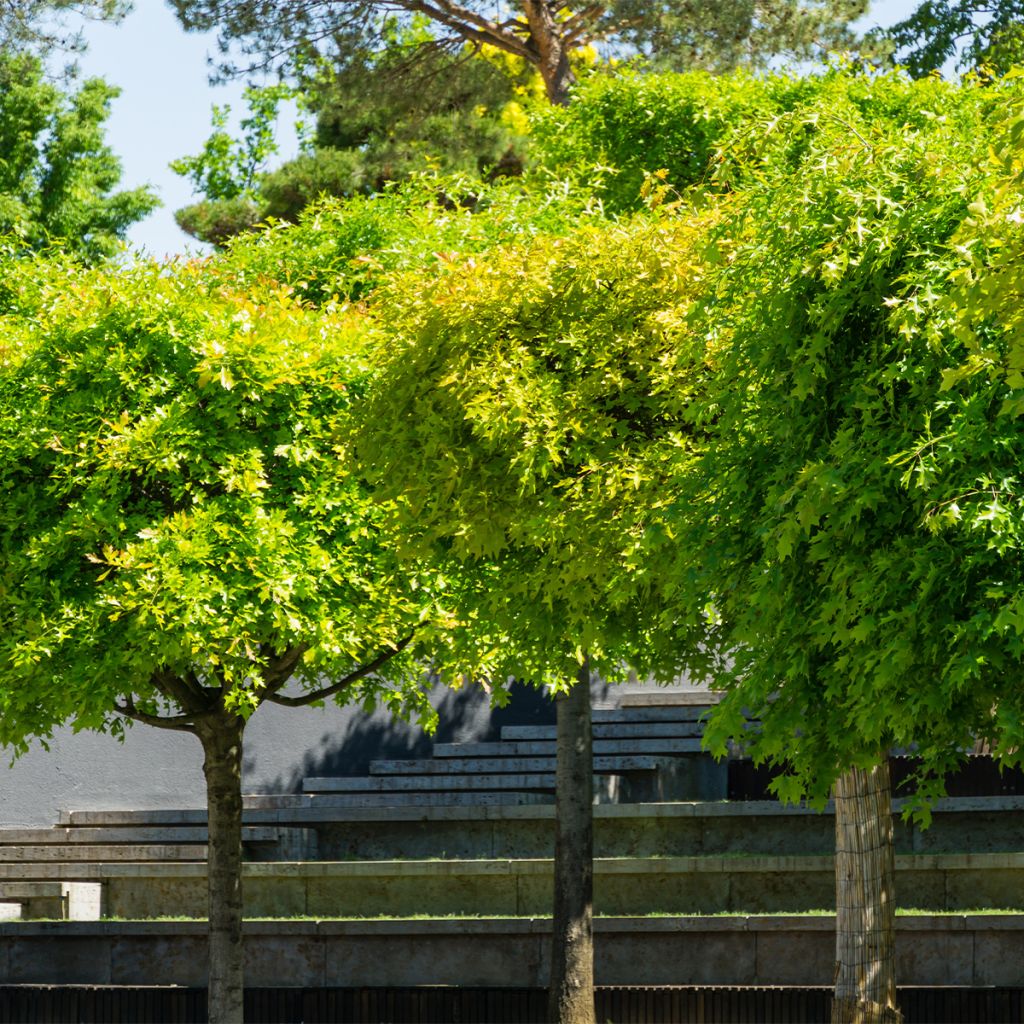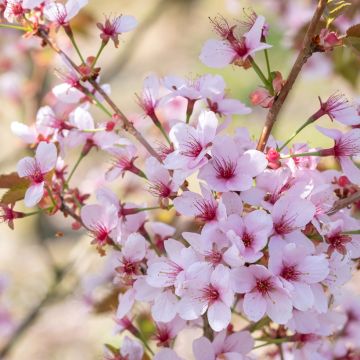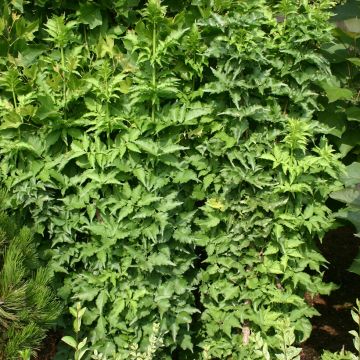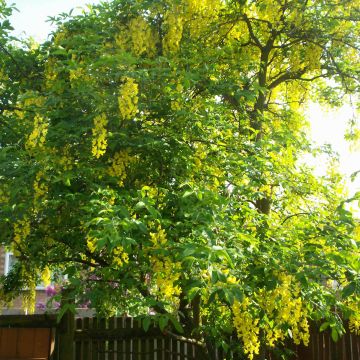

Quercus palustris Green Dwarf - Pin Oak


Quercus palustris Green Dwarf - Pin Oak


Quercus palustris Green Dwarf - Pin Oak


Quercus palustris Green Dwarf - Pin Oak
Quercus palustris Green Dwarf - Pin Oak
Quercus palustris Green Dwarf
Pin Oak, Swamp Oak
This item cannot be shipped to the selected country
Delivery charge from €5.90
Oversize package delivery charge from €6.90
Delivery to Corse prohibited
More information
Schedule delivery date,
and select date in basket
This plant carries a 24 months recovery warranty
More information
We guarantee the quality of our plants for a full growing cycle, and will replace at our expense any plant that fails to recover under normal climatic and planting conditions.
From €5.90 for pickup delivery and €6.90 for home delivery
Express home delivery from €8.90.
Oversize package: home delivery by special carrier from €6.90 per order..
Express home delivery from €8.90.
Delivery to Corse prohibited: UE law prohibits the import of this plant from mainland France to Corse as part of the fight against Xylella fastidiosa. Please accept our sincere apologies.
More information

Does this plant fit my garden?
Set up your Plantfit profile →
Description
Quercus palustris 'Green Dwarf' is a dwarf variety of the swamp oak. It has a compact and regular habit in a dense ball shape, grown on a more or less tall stem and suitable for smaller gardens. Its large deciduous leaves, deeply incised, dark green, remain on the tree for a long time, capturing attention with their brilliance and autumnal shades of red-orange. This deciduous tree is a very hardy species that grows easily in full sun or partial shade, in all types of moist and deep soils, even wet, well-drained and without limestone. It is highly resistant to pollution and requires virtually no maintenance except for pruning dead and damaged branches. Use it to highlight a small body of water in a row, decorate a container on a terrace or in a city courtyard, or in symmetrical planting to bring brightness and structure to flowerbeds.
Native to the eastern and central United States, Quercus palustris is a large tree in the beech family, which can reach a height of 20 to 25m (65ft 7in to 82ft) with a spread of 12m (39ft 5in), with a conical habit. The cultivar 'Green Dwarf' is a dwarf variety with a dense, compact ball-shaped habit, which is generally grown on a more or less tall stem. It is a Dutch selection by H. de Vroom, dating back to 1977. Of medium growth, it will not exceed 4m (13ft 1in) in height and 2.5m (8ft 2in) in spread. The leaves, deeply divided into 5 to 7 lobes, somewhat resemble maple leaves. They measure from 10 to 15cm (3.9 to 5.9in) in length and 5 to 10cm (2 to 3.9in) in width. Shiny green during the summer, they turn a beautiful autumnal shade of red-orange. Almost marcescent, the dry and brownish foliage persists on the branches until winter. This oak tree blooms quite early in spring, then produces very decorative acorns with a diameter of 2cm (0.8in), nearly round, in two years. Its trunk, very straight, is covered with a smooth, greyish bark, and its branches give rise to numerous slender and more or less thorny twigs, which earned it its name. This oak tree develops a taproot, but its root system is not very deep. It can live 90 to 120 years in the garden.
The swamp oak 'Green Dwarf' grows in any rich, well-drained soil, without excessive limestone, in an open position, where it will be visible from afar. This variety with an architectural habit will express its full potential as a specimen planted in the center of a perennial or low shrub flowerbed, or in a row of several subjects. The tree shows more harmonious growth when cultivated in sheltered conditions, without excessive competition. To surround it, choose for example small evergreen shrubby honeysuckles (Lonicera nitida, L.pileata), boxwood hedges, Spiraeas with beautiful autumn colours, or even ground cover roses.
Report an error about the product description
Quercus palustris Green Dwarf - Pin Oak in pictures




Plant habit
Flowering
Foliage
Botanical data
Quercus
palustris
Green Dwarf
Fagaceae
Pin Oak, Swamp Oak
Cultivar or hybrid
Other Oak
Planting and care
Quercus palustris is preferably planted in autumn in any rich, deep, well-drained, slightly acidic, neutral, or slightly calcareous soil. Avoid very clayey and compact soils. It tolerates occasional periods of drought. It should be planted in a sunny location. Stake the young plants and then let nature take its course. Pruning is unnecessary, except for young trees that do not grow in a balanced manner. In February, before the vegetation resumes, remove dead or diseased wood that hinders the habit of the tree.
Planting period
Intended location
Care
-
, onOrder confirmed
Reply from on Promesse de fleurs
Trees for small gardens
Haven't found what you were looking for?
Hardiness is the lowest winter temperature a plant can endure without suffering serious damage or even dying. However, hardiness is affected by location (a sheltered area, such as a patio), protection (winter cover) and soil type (hardiness is improved by well-drained soil).

Photo Sharing Terms & Conditions
In order to encourage gardeners to interact and share their experiences, Promesse de fleurs offers various media enabling content to be uploaded onto its Site - in particular via the ‘Photo sharing’ module.
The User agrees to refrain from:
- Posting any content that is illegal, prejudicial, insulting, racist, inciteful to hatred, revisionist, contrary to public decency, that infringes on privacy or on the privacy rights of third parties, in particular the publicity rights of persons and goods, intellectual property rights, or the right to privacy.
- Submitting content on behalf of a third party;
- Impersonate the identity of a third party and/or publish any personal information about a third party;
In general, the User undertakes to refrain from any unethical behaviour.
All Content (in particular text, comments, files, images, photos, videos, creative works, etc.), which may be subject to property or intellectual property rights, image or other private rights, shall remain the property of the User, subject to the limited rights granted by the terms of the licence granted by Promesse de fleurs as stated below. Users are at liberty to publish or not to publish such Content on the Site, notably via the ‘Photo Sharing’ facility, and accept that this Content shall be made public and freely accessible, notably on the Internet.
Users further acknowledge, undertake to have ,and guarantee that they hold all necessary rights and permissions to publish such material on the Site, in particular with regard to the legislation in force pertaining to any privacy, property, intellectual property, image, or contractual rights, or rights of any other nature. By publishing such Content on the Site, Users acknowledge accepting full liability as publishers of the Content within the meaning of the law, and grant Promesse de fleurs, free of charge, an inclusive, worldwide licence for the said Content for the entire duration of its publication, including all reproduction, representation, up/downloading, displaying, performing, transmission, and storage rights.
Users also grant permission for their name to be linked to the Content and accept that this link may not always be made available.
By engaging in posting material, Users consent to their Content becoming automatically accessible on the Internet, in particular on other sites and/or blogs and/or web pages of the Promesse de fleurs site, including in particular social pages and the Promesse de fleurs catalogue.
Users may secure the removal of entrusted content free of charge by issuing a simple request via our contact form.
The flowering period indicated on our website applies to countries and regions located in USDA zone 8 (France, the United Kingdom, Ireland, the Netherlands, etc.)
It will vary according to where you live:
- In zones 9 to 10 (Italy, Spain, Greece, etc.), flowering will occur about 2 to 4 weeks earlier.
- In zones 6 to 7 (Germany, Poland, Slovenia, and lower mountainous regions), flowering will be delayed by 2 to 3 weeks.
- In zone 5 (Central Europe, Scandinavia), blooming will be delayed by 3 to 5 weeks.
In temperate climates, pruning of spring-flowering shrubs (forsythia, spireas, etc.) should be done just after flowering.
Pruning of summer-flowering shrubs (Indian Lilac, Perovskia, etc.) can be done in winter or spring.
In cold regions as well as with frost-sensitive plants, avoid pruning too early when severe frosts may still occur.
The planting period indicated on our website applies to countries and regions located in USDA zone 8 (France, United Kingdom, Ireland, Netherlands).
It will vary according to where you live:
- In Mediterranean zones (Marseille, Madrid, Milan, etc.), autumn and winter are the best planting periods.
- In continental zones (Strasbourg, Munich, Vienna, etc.), delay planting by 2 to 3 weeks in spring and bring it forward by 2 to 4 weeks in autumn.
- In mountainous regions (the Alps, Pyrenees, Carpathians, etc.), it is best to plant in late spring (May-June) or late summer (August-September).
The harvesting period indicated on our website applies to countries and regions in USDA zone 8 (France, England, Ireland, the Netherlands).
In colder areas (Scandinavia, Poland, Austria...) fruit and vegetable harvests are likely to be delayed by 3-4 weeks.
In warmer areas (Italy, Spain, Greece, etc.), harvesting will probably take place earlier, depending on weather conditions.
The sowing periods indicated on our website apply to countries and regions within USDA Zone 8 (France, UK, Ireland, Netherlands).
In colder areas (Scandinavia, Poland, Austria...), delay any outdoor sowing by 3-4 weeks, or sow under glass.
In warmer climes (Italy, Spain, Greece, etc.), bring outdoor sowing forward by a few weeks.























































